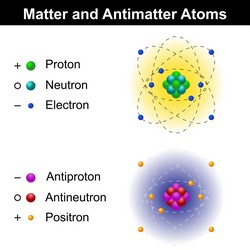Tests at the cutting edge of known physics
Researchers contributing to the MAMLS (Matter-antimatter and Lorentz symmetry tests) project aimed to experimentally test the matter-antimatter symmetry of the universe, Lorentz invariance, possibly discovering new physics. Researchers measured the magnetic moment of a proton confined in a Penning trap. The goal of that measurement was to improve the accuracy of the known proton g-factor by an order of magnitude. In addition, the accuracy of the technique was expected to increase by three orders of magnitude. The method would then be directly applicable to measurements on antiprotons and the comparison would result in an updated value for the universal matter-antimatter ratio. Substantial upgrade to the equipment was undertaken and published. This included installation of new Penning trap electrodes, new axial and cyclotron detectors as well as a superconducting shielding coil to stabilise the magnetic field. New significant results are anticipated shortly after project end. The possibility of using atomic clocks to test Lorentz symmetry or using sensitive atomic magnetometers to search for new physics was also investigated. Collaboration with theorists from different countries resulted in several high-profile journal articles, providing constraints on certain models of dark matter. Furthermore, an international collaboration was formed with a new objective. The latter was to develop an entirely new platform for the deterministic recombination of antiprotons and positrons to antihydrogen, on a miniaturised chip-scale architecture. Nevertheless, further modelling studies of a new charged particle trapping technique took place and have been submitted for publication in the New Journal of Physics. This method is expected to enable trapping of charged particles with vastly different charge-mass ratios for more efficient recombination of antiprotons with positrons. Discovery of the Higgs boson in 2012 confirmed the major predictions of the standard model of particle physics (SM). Given the SM provides no mechanism to explain the observed asymmetry of matter-antimatter in the universe, the work of MAMLS is of crucial importance. The results of these precision measurements may reveal a window to new physics.
Keywords
Matter-antimatter asymmetry, Lorentz invariance, MAMLS, proton g-factor, Penning trap, dark matter,

